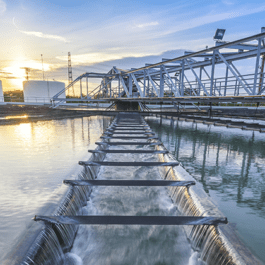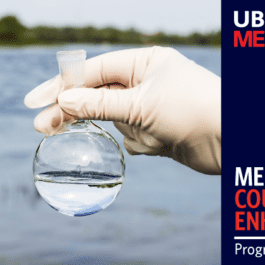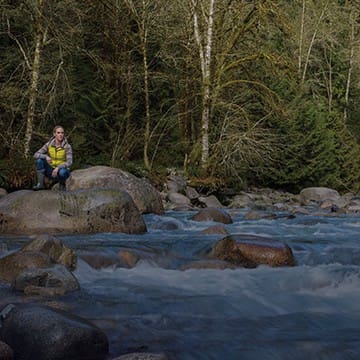
Developing A Water Safety Plan
Recommendations for water treatment that address water quality risks for residents
Two MEL in Integrated Water Management students developed a comprehensive water safety plan for a small island community in British Columbia that addresses water quality risks from source to tap.

As part of their Water & Wastewater Management Strategies course, MEL in Integrated Water Management Engineering students Yasemin Parkinson and Hassan Shaukat created a water safety plan for the Gillies Bay Improvement District, a small community on Texada Island, BC.
Like many remote communities, Gillies Bay faces challenges ensuring water quality for its residents, with boil water advisories a routine occurrence during the summer months. The community has just one level of water treatment (chlorination) and its water network infrastructure is more than five decades old.
Yasemin and Hassan evaluated various strategies to address the complex issues impacting the community’s water quality. They ultimately decided that the framework of a water safety plan offered the comprehensive approach they were looking for. Water safety plans are a regulatory requirement in Alberta and Ontario, and Hassan had previous experience developing water safety plans for wastewater treatment in the Middle East. Both were excited by the potential value of a water safety plan with its holistic and proactive approach to water management and rigorous system of risk identification, assessment and mitigation.
“A water safety plan looks at water quality from the source to the tap and everything in between,” says Hassan. “Reviewing risks under one umbrella helps you better identify and rank issues and take step-by-step actions to improve water quality.”
Although the two students originally intended to travel to Texada Island to collect data and make observations, the COVID-19 pandemic prevented this from happening. Instead, they made use of existing documents, including a master water plan, water conservation plan and a consultant report on recommended water treatment upgrades. They reviewed community bylaws and examined licences for timber, mining and airport activities in the district. Yasemin and Hassan also contacted the system administrator to ask questions and connected with UBC Master of Engineering student Jaycee Wright, who is currently participating in a UBC-led water treatment pilot program for the RESEAU Centre for Mobilizing Innovation at Gillies Bay.
Using Alberta’s water safety plan guideline document as a framework, Yasemin and Hassan painstakingly evaluated the risk levels of 190 parameters. They began by looking at the community’s source water, a dammed lake within a watershed area where land use activities include an airport, mining, forestry and recreational agriculture. Protecting source water is a very proactive approach to ensuring safe drinking water, and the two students identified 23 source water risks, with nine of them being high risk.
The residents of Gillies Bay face frequent boil water advisories due to poor water quality, particularly in the summer during periods of high turbidity and high coliform counts. Water is currently treated through chlorination, yet as Hassan and Yasemin noted, this leads to several key risks, including incorrect chlorine dose adjustments and high chlorine demand due to poor water quality.
They had two key recommendations to address water treatment. First, they advocated switching to an automated control system that would automatically match chlorine dosing to real-time requirements, rather than the current process where dosing is done manually. They also recommended adding a second level of treatment, identifying sand filtration as a low maintenance and low-cost solution.
The island’s existing water network, installed in the 1950s, is prone to leakages and low water pressure, with residents currently asked to turn off their water supply when they hear a fire alarm to ensure the fire department has the water pressure and volumes needed to put out fires. To address these issues, the students recommended implementing a full asset management program, installing water meters and backflow preventors on existing homes, and installing a larger water storage tank at a higher elevation.
Yasemin and Hassan then did a second risk analysis to predict the effectiveness of their proposed solutions in reducing water safety risks. A risk assessment comparison showed the number of key risks dropping from five to one.
Most importantly, their document provides a concrete roadmap for the community to prioritize the short- and medium-term actions it can take to provide safe drinking water for residents while also meeting the needs of nearby industrial users.
“We see so many small communities where the water system services a very small population and is stretched beyond its capacity to deliver safe water,” says Yasemin. “Water safety plans like the one we developed for Gilles Bay can help address that.”
Application Deadlines
The online application portal for the January 2025 has closed.
Get ready to apply!
Admissions for the 2026 intake will open on January 1, 2025.
How to ApplyJoin us for an
Info Session
Sign up for our latest online information sessions and discover what our programs have to offer.
Sign Up NowSelected Articles
Integrated Water Management
Apply your technical and leadership skills in developing sustainable water management solutions.
Read More

